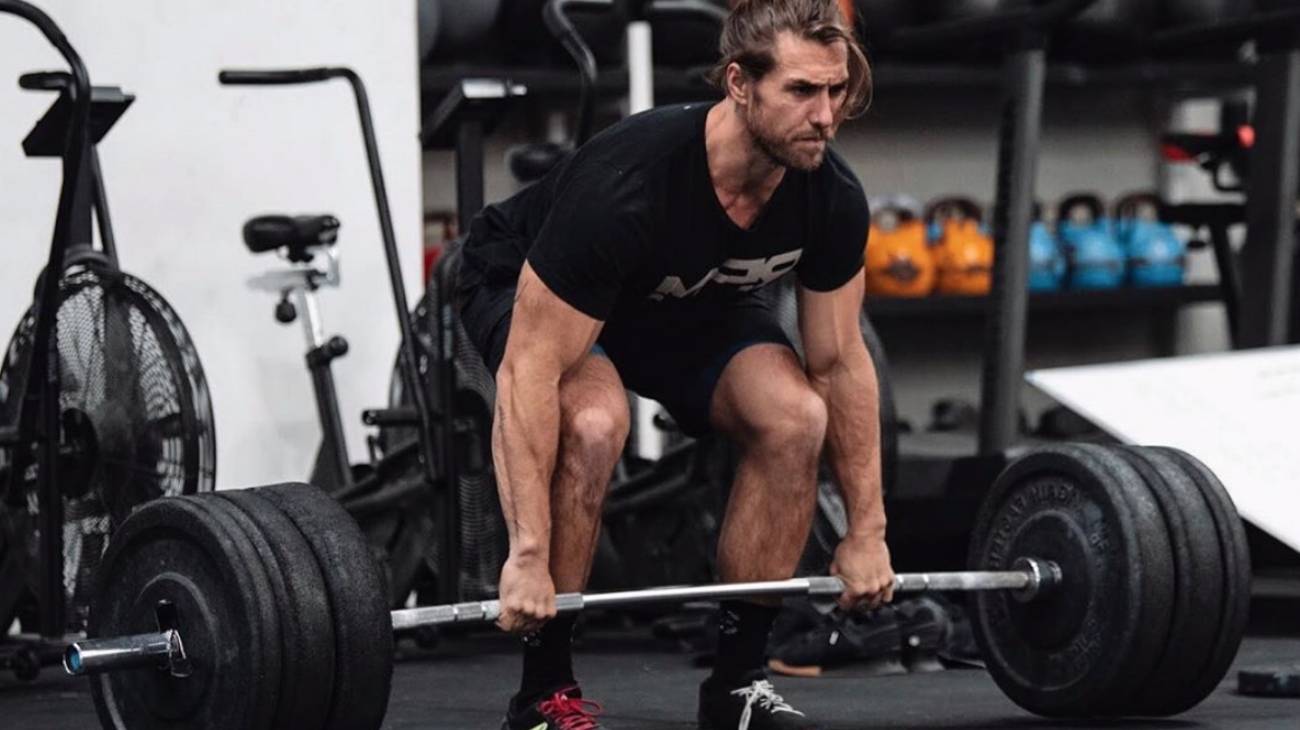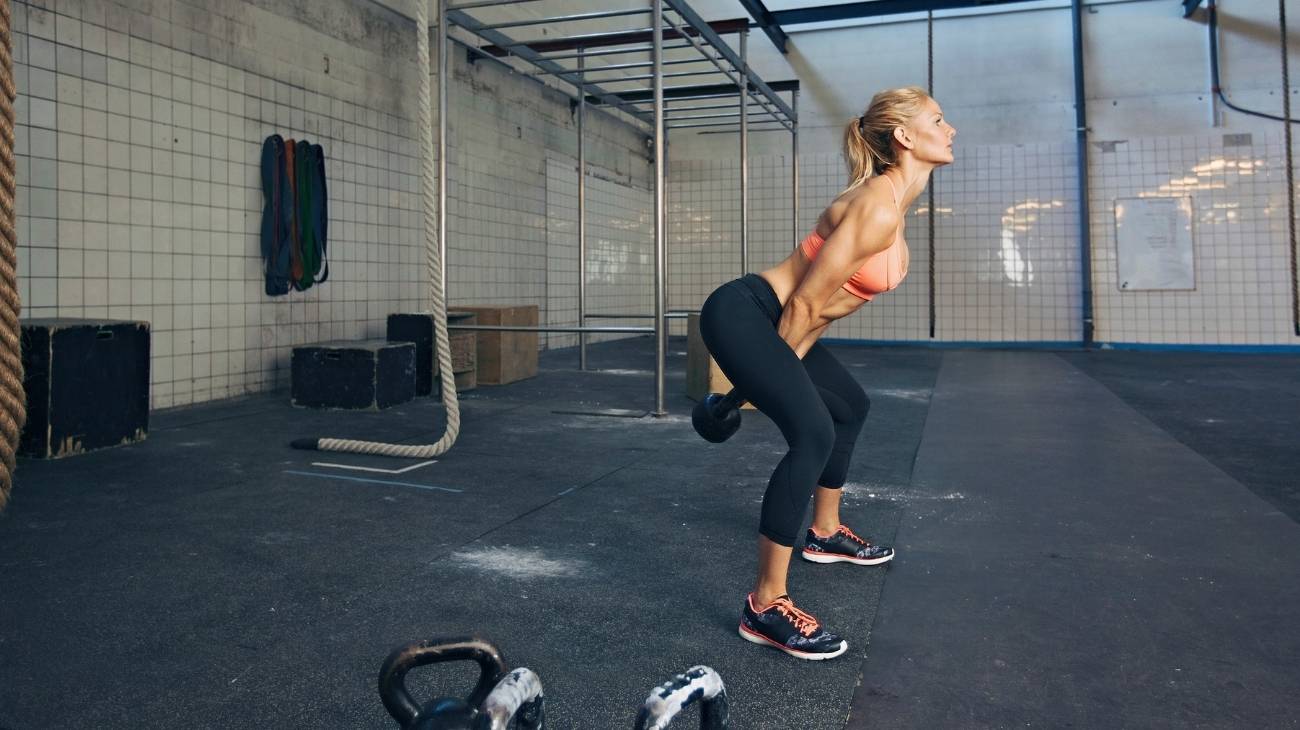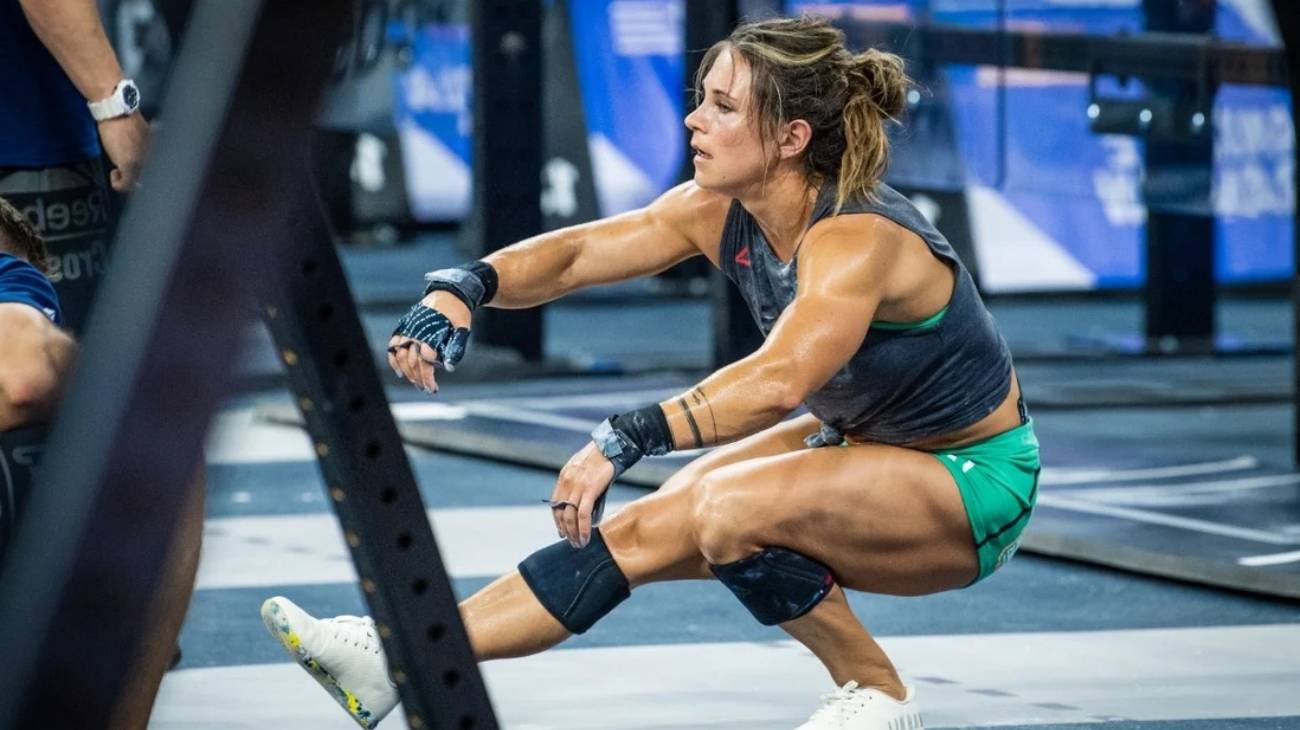Some specialists consider that Crossfit is for agile and strong people, however this sport is for everyone, as long as you train from less to more and under the guidance of a good trainer.
The back and shoulders are the parts of the body that get injured the most if you don't have a perfect technique. We leave you with this list of the most common back injuries in Crossfit, as well as how to apply the PRICE therapy and give first aid. And if you have an injury, you will know which are the best recovery products.
What are the most common types of back injuries when doing Crossfit?
The risk is not in Crossfit, but rather in practising it badly and starting to train as if you had superpowers, without a proper warm-up or good lifting technique. Lifting incorrectly generates injuries in any joint and in the vertebrae of the spine. Learn about the most common Crossfit ailments in this article:
Herniated disc
It can occur in any part of the spine and as a consequence it can irritate a nearby nerve. In crossfit it occurs from lifting a heavy weight with poor technique, the nucleus of a spinal disc is pushed out through a tear in its annulus. It is known as "slipped disc" and "ruptured disc". Many people have no symptoms, but when attempting to exert themselves in a way that involves stability in the spine, severe pain occurs.
Sciatica
It is likely to affect only one side of the body. It is a pain that runs along the sciatic nerve, from the lower back to the lower leg. It is usually the result of poorly performed exercises, especially those that require heavy lifting while standing.
When a herniated disc is already present, sciatica is more likely to develop. Compression of the nerve results in severe pain, swelling and even numbness in the legs. Many patients recover with rest and drug treatment, although it is likely to be a long time without being in the box for crossfit.
Muscle strains
A regular movement of the muscle is to contract and then relax, but when there is excessive tension the muscle contracts and remains tense. This scenario is caused by a bad warm-up of the body and the high demands of Crossfit, which has different exercises every day. When the gluteal muscles wear out, your hip suffers and this joint begins to suffer until it is injured.
Trochanteric bursitis
Trochanteric bursitis is inflammation of the serous bursae (bursae) in the proximal end of the femur. Although the hip is one of the strongest joints, it takes the longest to recover from injury. Uncontrolled squatting, jumping and sudden movements with weight on the back cause this part of the body to become inflamed. There are repeated movements that do not hurt, but when applying weight it is different because the body must adapt to the explosiveness of Crossfit.
Low back pain
Low back pain is just a way of saying that there is pain in the back, and it can be related to injuries to muscles, ligaments and tendons. It tends to increase with advancing age, which is why specialists believe that people aged 50 and over should no longer do the sport, unless they have spent a lifetime working out in other disciplines.
Inflammation of ligaments and tendons must be treated immediately before attempting to resume physical activity, otherwise it is the spine and nerves that may be compromised by internal compression.
Best products for Crossfit back injury recovery
Bestseller
-
Acupressure Mat and Pillow (Black/Gray)
$49.95 -
Acupressure Mat and Pillow (Green/Navy)
$49.95 -
Acupressure Mat and Pillow (Pink/Bordeaux)
$49.95 -
Acupressure Pillow (Black/Gray)
$29.46 -
Acupressure Pillow (Green/Navy)
$29.46 -
Acupressure Pillow (Pink/Bordeaux)
$29.46 -
Back Support Belt (Black)
$34.95 -
Back Support Belt (Green)
$34.95 -
Back Support Belt (Pink)
$34.95 -
Heating Pad for Microwave Classic Bottle Shaped (Hearts)
$19.95 -
Heating Pad for Microwave Classic Bottle Shaped (Oxford)
$19.95 -
Heating Pad for Microwave Classic Bottle Shaped (Sport)
$19.95 -
High Density Foam Roller for Muscle (Black/Gray)
$29.95 -
High Density Foam Roller for Muscle (Green/Navy)
$29.95 -
High Density Foam Roller for Muscle (Pink/Bordeaux)
$29.95 -
Ice Massage Roller Ball (Black)
$39.95 -
Ice Massage Roller Ball (Green)
$39.95 -
Ice Massage Roller Ball (Pink)
$39.95 -
Microwave Heating Pad for Back Pain Relief (Extra Large) (Hearts)
$29.95 -
Microwave Heating Pad for Back Pain Relief (Extra Large) (Oxford)
$29.95 -
Microwave Heating Pad for Back Pain Relief (Extra Large) (Sport)
$29.95 -
Microwave Heating Pad for Neck & Shoulder Pain Relief (Hearts)
$24.95 -
Microwave Heating Pad for Neck & Shoulder Pain Relief (Oxford)
$24.95 -
Microwave Heating Pad for Neck & Shoulder Pain Relief (Sport)
$24.95 -
Microwaveable Heating Pad for Pain Relief (Hearts)
$19.95 -
Microwaveable Heating Pad for Pain Relief (Oxford)
$19.95 -
Microwaveable Heating Pad for Pain Relief (Sport)
$19.95 -
Pack 2 In 1 Foam Roller High + Soft Density (Black/Gray)
$29.95 -
Pack 2 In 1 Foam Roller High + Soft Density (Green/Navy)
$29.95 -
Pack 2 In 1 Foam Roller High + Soft Density (Pink/Bordeaux)
$29.95 -
Sacroiliac Support Belt (Black)
$24.95 -
Sacroiliac Support Belt (Green)
$24.95 -
Sacroiliac Support Belt (Pink)
$24.95 -
Soft Density Foam Roller for Recovery (Black)
$29.95 -
Soft Density Foam Roller for Recovery (Green)
$29.95 -
Soft Density Foam Roller for Recovery (Pink)
$29.95 -
Trigger Point Massage Stick (Black)
$14.95 -
Trigger Point Massage Stick (Green)
$14.95 -
Trigger Point Massage Stick (Pink)
$14.95
How to apply the RICE therapy to treat back injuries in Crossfit?
Whenever there is an injury to the soft tissues of the body, it is possible to apply the PRICE therapy, which is a set of steps to follow to treat minor ailments. The PRICE protocol is an update of the RICE therapy, but received an update in its application to make it more effective.
- Protection: In the case of a back injury, it is complex to apply a highly effective bandage. In the case of the neck, you could use a neck brace if it is an injury that has already been reported and the use of this component was already suggested by a specialist.
- Rest: Avoid further physical activity. When an injury is detected, movement should be kept to a minimum to avoid further blood circulation and increase inflammation.
- Ice: Using a handkerchief or thick bag, ice is applied for a maximum of 20 minutes, otherwise there may be burns to the skin. In this case you should lie on your stomach and place the bag on the affected area of the back.
- Compression: What we want is to reduce pain, swelling and bruising after an injury. You should not squeeze the affected area too tightly. To achieve this we can use a compression belt or a girdle in the case of women.
- Elevation: By lowering the pain we can give some movement to the joint, so it is recommended to elevate the damaged area and reduce blood flow. Lie on your stomach and put a pillow on your pelvis if the pain is in the lower back to keep it elevated.
References
- Gean, R. P., Martin, R. D., Cassat, M., & Mears, S. C. (2020). A Systematic Review and Meta-analysis of Injury in Crossfit. Journal of surgical orthopaedic advances, 29(1), 26-30. https://europepmc.org/article/med/32223862
- Burton, A. K. (2005). How to prevent low back pain. Best practice & research Clinical rheumatology, 19(4), 541-555. https://www.sciencedirect.com/science/article/abs/pii/S1521694205000240
- Lizier, D. T., Perez, M. V., & Sakata, R. K. (2012). Exercises for treatment of nonspecific low back pain. Brazilian Journal of Anesthesiology, 62(6), 838-846. https://www.sciencedirect.com/science/article/pii/S0034709412701836
- Hoy, D., Brooks, P., Blyth, F., & Buchbinder, R. (2010). The epidemiology of low back pain. Best practice & research Clinical rheumatology, 24(6), 769-781. https://www.sciencedirect.com/science/article/abs/pii/S1521694210000884
- Waddell, G. (2004). The back pain revolution. Elsevier Health Sciences. https://books.google.es/books?hl=en&lr=&id=MsM5EAAAQBAJ
- Klimek, C., Ashbeck, C., Brook, A. J., & Durall, C. (2018). Are injuries more common with CrossFit training than other forms of exercise?. Journal of sport rehabilitation, 27(3), 295-299. https://journals.humankinetics.com/view/journals/jsr/27/3/article-p295.xml
- Alekseyev, K., John, A., Malek, A., Lakdawala, M., Verma, N., Southall, C., … & Ross, M. (2020). Identifying the most common CrossFit injuries in a variety of athletes. Rehabilitation process and outcome, 9, 1179572719897069. https://journals.sagepub.com/doi/pdf/10.1177/1179572719897069
- Ángel Rodríguez, M., García-Calleja, P., Terrados, N., Crespo, I., Del Valle, M., & Olmedillas, H. (2022). Injury in CrossFit®: a systematic review of epidemiology and risk factors. The Physician and Sportsmedicine, 50(1), 3-10. https://www.tandfonline.com/doi/abs/10.1080/00913847.2020.1864675
- Hopkins, B. S., Cloney, M. B., Kesavabhotla, K., Yamaguchi, J., Smith, Z. A., Koski, T. R., … & Dahdaleh, N. S. (2019). Impact of CrossFit-related spinal injuries. Clinical journal of sport medicine, 29(6), 482-485. https://journals.lww.com/cjsportsmed/Abstract/2019/11000/Impact_of_CrossFit_Related_Spinal_Injuries.8.aspx
- Hak, P. T., Hodzovic, E., & Hickey, B. (2022). The nature and prevalence of injury during CrossFit training. The Journal of Strength & Conditioning Research. https://journals.lww.com/nsca-jscr/abstract/9000/the_nature_and_prevalence_of_injury_during.97557.aspx
































































